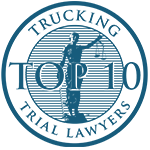CALL (800) 863-5312 FOR A FREE CONSULTATION WITH ONE OF OUR EXPERIENCED WORKPLACE INJURY ATTORNEYS
Defective equipment can be the source of a variety of injuries, particularly in certain professions such as agriculture, construction, and forestry. A victim of a defective equipment accident may be entitled to compensation for their injuries. However, many victims are unsure of what rights they may have following an accident.
If you have been injured due to a piece of defective equipment and are interested in pursuing legal action, or if you would like to learn more about your rights following a defective equipment accident, call Zinda Law Group at (800) 863-5312 to receive a free case evaluation with one of our defective machinery lawyers.
WHAT IS A DEFECTIVE PIECE OF EQUIPMENT?
A piece of equipment is defective if it is unsafe due to a defect which could reasonably be expected to make the piece of equipment unsafe or a hazard to one’s health. The type of defect can be characterized as either a manufacturing defect or a design defect.
A manufacturing defect is when a single unit in a manufacturing batch had a defect that made that piece of equipment more dangerous than the others, such as an incorrectly assembled machine or a nail gun that misfires. A design defect, on the other hand, means that the product is inherently dangerous by design, such as a machine with insufficient safety features. A design defect could have been remedied through a reasonable alternative design.
Learn More: Product Liability
DEFECTIVE EQUIPMENT AND MACHINERY INJURY STATISTICS
Listed below are several facts and figures regarding defective equipment and machinery injury statistics. The following statistics are based on reports conducted by the U.S. Bureau of Labor Statistics in 2018.
- Over 1,500 reports of falls from a collapsing structure or equipment
- Over 52,000 reports of injuries due to being struck by a falling piece of equipment
- Over 41,000 reports of injuries due to a being harmed by a handheld product
- Over 33,000 reports of injuries due to being caught in or compressed by equipment
MOST COMMON INJURIES FROM FAULTY EQUIPMENT AND MACHINERY
Injuries resulting from unsafe machinery or equipment range in form and severity. Some injuries may be more prevalent in a certain profession. For instance, falls are a common injury among construction workers due to faulty ladders or mechanical lifts. Other common injuries resulting from faulty equipment and machinery may include:
- Nail gun injuries to head, legs, arms, and extremities
- Traumatic brain injuries
- Burns, bruises, and lacerations
- Broken bones
- Amputated limbs
- Death
WHAT TO DO AFTER A WORKPLACE INJURY DUE TO DEFECTIVE EQUIPMENT
1. Seek Immediate Medical Attention
The first and most important thing to do after being involved in a defective machinery accident is to seek medical attention. Regardless of the severity of the injury, medical attention should be your first concern.
It is also important to keep in mind that seemingly minor injuries may worsen or become more severe with time. For instance, a minor back sprain can potentially develop into a chronic issue. If the injury is not properly and promptly treated, you may be putting yourself at risk. Thus, it is important to consider visiting a doctor or hospital even in cases where the injury seems minor.
2. File a Report or Complaint
After seeking medical treatment, the next step you should take is to file a formal accident report with your workplace or with the manufacturer of the defective piece of equipment. Taking this step may be beneficial to you for several reasons. For instance, a formal report will create an official record of the accident and may serve as legitimate evidence of your injuries. The report may also put the at-fault party on notice that something must be done to remedy the faulty product.
3. Document the Accident
Documenting the accident means keeping a thorough and organized personal file which contains every important piece of information relating to the accident and your subsequent injuries. Documenting the accident may be one way of establishing fault against the manufacturer of the defective piece of equipment. Important documents which you should be sure to include in your file may include:
- Photographs of your injuries
- Photographs of the defective piece of equipment
- Copies of the accident report or formal complaint
- Copies of witness statements, if any
- Medical and pharmacy bills
4. Contact an Attorney
Finally, you should contact a defective machinery lawyer. An attorney may ask to meet with you in person or speak with you over the phone to discuss the details of the accident. After doing so, the attorney may be able to provide legal advice regarding your rights. If necessary, the attorney may also begin the process of filing a formal lawsuit against the necessary parties.
Learn More: Accident Compensation
WHO IS LIABLE FOR MACHINE MALFUNCTION OR FAULTY EQUIPMENT INJURIES?
Employer
In some defective equipment cases, the employer may be subject to liability for an employee’s injuries. If, for instance, an employer was aware of a defective machine or piece of equipment and did nothing to remedy the issue, the employer may be liable for negligence. The employer may also be liable if it failed to properly maintain the equipment. Although workers’ compensation may cover an injured employee’s claims, the injured employee may be able to file a lawsuit against the employer for any damages in excess of those covered by his workers’ compensation plan.
Read More: Construction Workers’ Rights
Manufacturer
The more common party that may be held liable for injuries due to a defective piece of equipment is the party that manufactured the equipment. The manufacturer may be subject to negligence claims or strict liability claims.
Retailer or Third-Party Seller
A party who sells a defective piece of equipment may also be subject to some form of liability. For example, if a manufacturer makes and supplies a defective piece of equipment to a retailer, and the retailer sells the piece of equipment to a company, the retailer may be liable for any harm caused by the defective equipment under a theory of strict liability.
FAULTY EQUIPMENT INJURY LAWSUITS
A faulty equipment injury lawsuit is comprised of several important steps or phases. Those phases may include:
1. Filing a Report
Filing a formal report with your employer or with the manufacturer of the faulty product is often the first step of a defective equipment lawsuit. Though filing a formal report is not absolutely necessary, it may be helpful in building the strength of your case.
2. Contacting an Attorney
The next step in the faulty equipment lawsuit process is to contact a defective equipment attorney. A personal injury attorney may discuss the facts of your case with you, gather critical evidence, and file the necessary paperwork to initiate a lawsuit.
3. Investigation
The investigation is a critical part of the faulty equipment lawsuit process. This phase may involve the attorney building your case. For instance, the attorney may interview key witnesses, review medical reports, and review company records. Investigation may also involve accounting for each of your damages, such as medical bills and lost wages.
4. Settlement and Lawsuit
Prior to a trial, you may have the option of accepting a settlement from the at-fault manufacturer or its insurance company. If it is not in your best interests to accept the settlement offer, your case may proceed to trial.
DEFECTIVE EQUIPMENT INJURY COMPENSATION
Most states have workers’ compensation laws that cover most workplace injuries due to defective equipment. These laws typically require employers to carry insurance specifically designed to cover all employees in cases where an employee sustains an injury while on the job. Thus, workers’ compensation should cover an injured employee’s injuries, regardless of which party is responsible for the accident and subsequent injuries.
However, in defective equipment cases, you may also be able to pursue compensation by filing a third-party liability claim. This means filing a personal injury lawsuit for your accident outside of the scope of workers’ compensation law. Thus, when a third party, such as an equipment manufacturer, is responsible for your accident due to manufacturing or selling a defective product, you may have the right to seek damages from that third party in excess of your workers’ compensation benefits. In such cases, you may be entitled to monetary damages for economic damages, non-economic damages, and punitive damages.
Economic Damages
Economic damages generally refer to damages which can be accounted for and easily calculated. In defective equipment cases, compensation in the form of economic damages may include:
- Medical and pharmacy bills
- Rehabilitation costs
- Lost income (present and future)
- Loss of earning capacity
Non-economic Damages
On the other hand, non-economic damages are intangible losses which cannot be easily quantified. Instead, non-economic damages are calculated by a jury. In defective machinery injury cases, compensation in the form of non-economic damages may include:
- Pain and suffering
- Emotional distress
- Disfigurement
- Disability
- Loss of consortium
Punitive Damages
Punitive damages may also be available in a defective machinery or equipment case, depending on jurisdiction. Punitive damages are not intended to compensate the victim for losses incurred as a result of the injury. Instead, punitive damages may be awarded as a means of punishing the at-fault party for particularly reckless or intentional conduct. Punitive damages may also be available if the accident resulted in a wrongful death.
Learn More: How to Calculate the Value of Case
CALL ZINDA LAW GROUP’S DEFECTIVE MACHINERY LAWYERS TODAY
If you have been injured at work by unsafe machinery or equipment, do not hesitate to contact Zinda Law Group. To set up your free consultation with a workplace injury attorney, call Zinda Law Group at (800) 863-5312. If we don’t win your case, you don’t owe us anything. That’s our No Win, No Fee Guarantee.
Meetings with attorneys by appointment only.


























